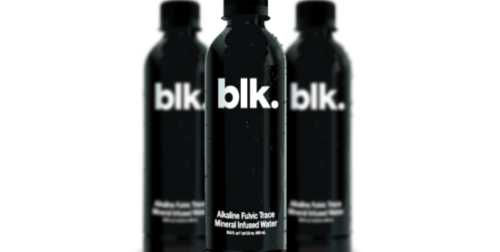As a market that’s growing year on year, brands have an opportunity to make the pure stuff one of the most innovative products around, says Nina Aggarwal, MD and co-founder of brand consultancy Fusion Learning.
There has been a concerted effort by many to have a serious conversation about sugar and its impact on our health; and unsurprisingly the blame and more recently, penalties, have been laid firmly at the door of fizzy drinks brands. However, in reality we need to stop playing the branding blame game, and instead look at how we can help change consumer behaviour as a whole.
This is especially needed in a highly important area of the drinks sector: water.
Most sugar laden brands are moving in the right direction when it comes to innovation and change and should be applauded for it; but there is a larger issue at hand: we’re simply not drinking enough water.
As one of the largest sectors of growth in the FMCG market, water is just one of the areas that has the potential to revolutionize the way, the amount, we consume it. However, brands shouldn’t just see a growth opportunity; they should want to take ownership and responsibility of improving the public’s health and be in the driver’s seat for consumer behaviour change.
Brands need to have a disruptive and innovative mind set, not just jump on a popular bandwagon. It may sound unrealistic and whimsical, but brands actually have to power to achieve all of this if they really want to.
On the go.
Water on the go is an area that is a key battleground for brands and the perfect arena to innovate in.
The flipside of this is of course the eco and ethical practices and waste this incurs; which is why companies such as Boxed Water is Better (using biodegradable boxes instead of plastic) and SodaStream are so impressive.
SodaStream’s managing director Fiona Hope recently told Marketing Week that “60% of sparkling water drinkers don’t realise SodaStream can make sparkling water and only know it as a machine for making cola or juice.”

SodaStream collection
She said that the brand has high awareness with consumers in the UK due to its success in the 80s, but added that “it has a reasonably unhealthy and fizzy flavoured heritage, and we have an opportunity to reposition against the back drop of sparkling water to make the brand more functional and youthful.”
With a similar mind set, the S’Well water bottle brand – made of non-leaching and non-toxic stainless steel – promotes keeping drinks cold for 24 hours and hot drinks hot for 12 hours. Already a hugely successful (not to mention instagrammable) brand, it doesn’t even need to ‘produce’ anything, but instead packages tap water up in a beautiful way.

S'Well
With a huge number of designs, it not only allows people to stay hydrated on the move it also boasts partnership with a number of charitable organisations. Whilst actively trying to reduce waste.
Appealing to a new audience
However, changing habits around water consumption doesn’t start in the here and now. What is the strategy in place for when we start consuming more than milk? And who is leading this? Parents, teachers, health visitors are of course the first in line, but brands also have an opportunity to start seeding in certain behaviours and attitudes from a young age.
We have to recognize that this demographic is interested and engaged in the art of storytelling, identity and image – perfectly demonstrated with the increase of Instagram users and bloggers and vloggers as influencers.
Therefore, brands that attempt to break the rules (and current consumer convention), have the potential to be successful in engaging with this audience, whilst driving change from an earlier age.
This serves two purposes: Your brand has the advantage of being at the vanguard of consumer change, but also has the potential to be a brand that becomes a staple, heritage and trusted brand; that travels through the consumer’s lifetime and down to the next generation.
Products like Blk water and the Right Cup might seem like novelty products to the average cynic, but by being pioneering in their approach to look, feel and taste of water, highlights their efforts to help solve the bigger problem.

In the same way that brands like Coca-Cola and Ribena should be applauded for their efforts in trying to help fight the sugar crisis, so too should the innovators looking to get us drinking more of the pure stuff.
article was originally featured on beveragedaily.com bit.ly/1pKufvM
